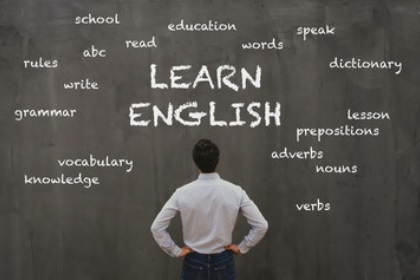Summary
Why do our EAL students learn English?
What is a text?
Why are we using texts in teaching language?
What are language skills?
What is the focus when working with EAL students?
Linking to differentiation
Already have the Collaborative Classroom – 50 Cooperative Learning Strategies for Student Engagement? Send us feedback here
Want the book at a discounted price? Email me for more details. Free postage across Australia.
Teaching skills and teaching texts are both important aspects of language instruction, and they are often interrelated. Here are some key differences between teaching skills and teaching texts:
Teaching skills: Teaching language skills involves teaching the various components of language, such as grammar, vocabulary, listening, speaking, reading, and writing. This approach focuses on developing students’ language proficiency by providing them with the tools and strategies to communicate effectively in a variety of contexts. Teaching language skills involves providing explicit instruction on the rules and conventions of the language, as well as opportunities for students to practice and apply their skills.
Teaching texts: Teaching texts involves using authentic materials, such as books, articles, videos, and other media, to provide students with exposure to the language in context. This approach focuses on developing students’ comprehension and critical thinking skills by analysing and interpreting texts. Teaching texts involves providing opportunities for students to engage with authentic materials, make connections to their own experiences, and develop a deeper understanding of the language and culture.
Why do our EAL students learn English?Although they do not have a choice but to learn the official language of the country they move to, overall, learning English can provide many benefits for students, both in their personal and professional lives. For EAL students, learning English can also help them integrate into their new community and feel more confident and comfortable in their new surroundings. |

English is considered the international language of communication, commerce, and technology, and it is one of the most widely spoken languages in the world. Learning English can provide many benefits for students, including:
Improved communication skills: English is the primary language used in international communication, which means that learning English can help students communicate with people from around the world. This can be especially important for students who plan to study or work abroad.
Enhanced academic opportunities: Many universities and educational institutions use English as the medium of instruction, so learning English can open up academic opportunities for students who want to pursue higher education.
Increased job opportunities: English is often required for many jobs, especially in fields such as business, science, and technology. By learning English, students can improve their employment prospects and gain access to a wider range of job opportunities.
Better cultural understanding: Learning English can also help students learn and understand the culture of English-speaking countries. This can promote cultural awareness and sensitivity, which is important for living and working in a global society.
Personal growth and development: Learning a new language can be a challenging and rewarding experience. It can help students develop important skills such as problem-solving, critical thinking, and creativity, and can improve their confidence and self-esteem.
What is a text?In general, a text is any piece of language that can be analysed and interpreted for its communicative meaning. The purpose of analysing texts is to understand how language is used to convey meaning and to develop skills in interpreting and producing language. The study of texts is an important part of language learning and is used in language teaching to help students develop their language skills. |

In the context of language and communication, a text can be defined as any written or spoken language that has a communicative purpose. This means that a text is a piece of language that is intended to convey meaning to a reader or listener. Texts can take many different forms, including:
Written texts: These include books, newspapers, magazines, reports, essays, letters, and emails.
Spoken texts: These include conversations, speeches, interviews, podcasts, and radio broadcasts.
Multimedia texts: These include videos, films, TV programs, and interactive media such as websites, blogs, and social media.
Why are we using texts in teaching language?The use of texts in language teaching provides a valuable tool for helping students learn and use the language effectively in real-life situations. |

Texts are commonly used in language teaching because they provide a rich source of language input, which is necessary for language acquisition. Here are some of the key reasons why texts are used in language teaching:
|
What are language skills?These skills are essential for effective communication in any language and are necessary for successful academic, social, and professional interactions. |

Language skills refer to a person’s ability to use language to communicate effectively. These skills include both expressive and receptive language abilities, which involve understanding language and using it to express oneself. Some of the key language skills include:
|
What is the focus when working with EAL students?
Teaching English as an Additional Language requires a focus on developing all aspects of language proficiency, including listening, speaking, reading, writing, grammar, vocabulary, and cultural awareness. By providing a supportive and engaging learning environment, teachers can help EAL students develop their language skills and achieve success in their academic and personal lives.

When teaching English as an Additional Language (EAL), there are several key areas that should be focused on to help students develop their language skills. Here are some of the important areas to consider:
|
Linking to differentiationDifferentiation is essential in EAL teaching as it allows teachers to meet the diverse needs of students and provide a supportive learning environment that fosters language development and academic success. By adapting instruction and materials to meet individual needs, teachers can help EAL students develop their language skills and achieve their full potential. |

Teaching English as an Additional Language (EAL) requires a focus on differentiation, which means adapting teaching methods and materials to meet the diverse needs of students. Here are some ways in which EAL teaching can be linked to differentiation:
|
In conclusion, while both approaches are important in language instruction and can be used in combination to provide a comprehensive language learning experience, it is important to keep in mind that EAL students DO NOT have to explore the same texts as their mainstream peers. Teaching skills can help students build a strong foundation in the language, while teaching texts can help them apply their skills in authentic contexts and develop a deeper understanding of the language and culture. Effective language instruction should incorporate both approaches, as well as provide opportunities for students to practise their skills with a variety of differentiated materials and in a variety of equitable contexts.
About the author:
Boney Nathan has worked as an EAL educator for over three decades across multiple settings including International Schools, Colleges, Universities, and public schools. She has a Master of Applied Linguistics, a Graduate Certificate in Education: International Baccalaureate (IB), and a B.Ed TESL (Hons).
While living in Western Australia, she was a Deputy Principal and a Teacher Consultant for Classroom Management and Student Engagement Strategies with the Western Australian Department of Education. Since moving to Melbourne in 2016, she has held leadership roles as an EAL Learning Specialist and Curriculum Coordinator. She continues to present at local and international online workshops and webinars. She has recently completed co-writing and publishing a step-by step Cooperative Learning Strategies Guide for teachers. Boney is passionate about growing EAL knowledge through sharing best practices.

